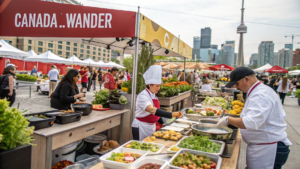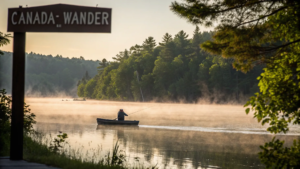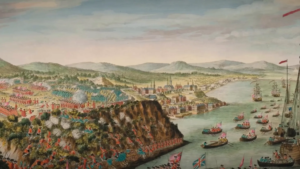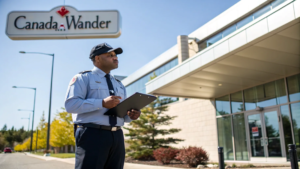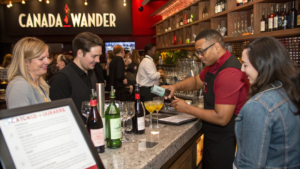Vancouver Hidden Gems Made Me Cancel My Flight Home
Discover the secret Vancouver spots that transformed a routine visit into an unforgettable adventure—and why they might make you extend your stay, too.
The confirmation email for my return flight glowed on my phone screen as I packed my suitcase in the cozy Kitsilano Airbnb. After a week in Vancouver, I’d checked off the usual suspects: Stanley Park, Granville Island, and the Capilano Suspension Bridge. My bags were nearly zipped when a text from a local friend changed everything: “You haven’t seen the real Vancouver yet.”
Twenty-four hours later, I was on the phone with the airline, paying the change fee with absolutely zero regrets. My carefully planned itinerary had unravelled in the most beautiful way possible, replaced by a series of experiences that revealed Vancouver’s beating heart. In these places, magic happens beyond the tourist trails.
What follows is my countdown of six extraordinary Vancouver hidden gems that compelled me to extend my stay. Each location offered something I couldn’t find in guidebooks—authentic moments that transformed me from tourist to temporary local, experiences that made postponing “real life” not just justifiable but necessary.
6. Lynn Canyon’s Secret Swimming Holes
Before discovering Lynn Canyon, I thought Vancouver’s natural swimming spots were limited to crowded beaches with no privacy. Most visitors flock to the suspension bridge at the park’s entrance, snap their photos, and leave—never venturing deeper into the canyon’s emerald heart.
On a sweltering Tuesday afternoon, my local guide led me past the bridge crowds and down a fern-lined trail where the noise of other visitors gradually faded. We hiked for roughly 30 minutes until the path descended to meet the rushing waters of Lynn Creek. There, tucked between ancient cedar trees and smooth granite boulders, was a series of crystalline pools formed by the creek’s natural contours.
The water was breathtakingly cold, glacier-fed and clearer than any natural water I’d ever seen. After the initial shock, swimming in that pristine water became a full-body meditation. Overhead, sunlight filtered through the forest canopy, creating dancing patterns on the creek bed below. While tourists paid admission for the more famous Capilano Suspension Bridge just miles away, we had this natural paradise completely to ourselves.
What makes Lynn Canyon truly special isn’t just the swimming holes but the journey to find them. Each step deeper into the forest peels away another layer between you and raw, untamed nature. The forest doesn’t perform for visitors here—it simply exists, and you’re privileged to experience it.

Visitor Tips: Enter Lynn Canyon Park from the main entrance on Lynn Valley Road. Skip the busy areas near the suspension bridge and follow the Baden-Powell Trail for approximately 2km. Listen for rushing water to find the swimming spots. Bring water shoes for the slippery rocks, and respect the environment by taking only photos and memories.
5. The East Van Brewery Back Rooms
Before discovering East Vancouver’s brewery scene, I’d resigned myself to predictable tourist pubs serving overpriced pints alongside mediocre poutine. What I found instead was a thriving craft beer community where locals and brewmasters mingle in spaces that feel more like creative workshops than bars.
The true magic happens beyond the main tasting rooms. At Strange Fellows Brewing, a seemingly ordinary door led to the “Fellowship Chamber”—a hidden room where small-batch experimental brews never found on liquor store shelves are shared with those in the know. At another unnamed brewery (the owner made me promise to keep it secret), the brewmaster invited us through the production area into a minuscule tasting nook surrounded by aging barrels where he poured samples directly from the source.
What struck me wasn’t just the exceptional beer but the conversations. In one evening, I found myself discussing wild fermentation techniques with a biochemist-turned-brewer, debating the best hiking trails with locals, and being invited to an underground jazz show happening later that night. No tourist attraction could have facilitated these connections that made me feel like I’d discovered the city’s authentic pulse.
These back rooms aren’t advertised or even officially acknowledged in some cases. They’re spaces where boundaries between visitors and locals dissolve, where genuine community forms around shared passions rather than tourist dollars. The best part? The price points were often lower than mainstream establishments, with tasting flights costing around $12-15 for truly exceptional craft creations.

Visitor Tips: Start at Strange Fellows Brewing on Clark Drive and ask about their special events. Visit during weekdays when brewers have more time to chat. Express genuine interest in the brewing process—this often leads to invitations to see “where the magic happens.” The East Vancouver brewery district is easily navigable on foot, so plan a self-guided tour hitting 3-4 establishments.
4. The Urban Foraging Tour of Chinatown
I almost skipped Chinatown entirely, having read online that it was “past its prime” and “not worth visiting.” That would have been a profound mistake. What I discovered wasn’t just a neighborhood but a living encyclopedia of culinary treasures hidden in plain sight.
Through a chance encounter at a coffee shop, I connected with Mei, a third-generation Chinese-Canadian who offers underground foraging tours of Chinatown. Not the kind of foraging where you pick mushrooms in forests—urban foraging, where knowing which unmarked door to knock on leads to culinary revelations.
Our morning began at an unassuming herbal shop where the proprietor, upon recognizing Mei, led us through a narrow hallway into a back garden where rare medicinal plants grew. He brewed tea from freshly picked leaves that “balanced energy” according to traditional Chinese medicine. The bitter-sweet flavour was unlike anything I’d tasted before, and whether it was the tea or the moment, I felt a remarkable sense of alertness and calm.
We continued to a basement dumpling shop with no English signage, where elderly women hand-folded perfect xiao long bao at lightning speed. For less than $10, I enjoyed the most exquisite soup dumplings—their delicate skins holding a rich broth that exploded with flavour. The women smiled at my obvious enjoyment but continued their work without the performative elements you’d find at tourist-oriented establishments.
The tour culminated at a secret rooftop garden above a nondescript building, where an elderly gentleman grew rare Chinese vegetables used by the neighbourhood’s most authentic restaurants. Standing amid his thriving urban oasis, the Vancouver skyline surrounding us, I felt I’d been granted access to a parallel city—one that existed alongside but separate from the version presented in travel guides.

Visitor Tips: While Mei’s tours aren’t officially advertised, similar experiences can be found through Vancouver Food Tour’s Chinatown offerings. Visit the Dr. Sun Yat-Sen Classical Chinese Garden and ask the staff for authentic food recommendations. The best time to explore is weekday mornings when vendors receive fresh supplies. Look for places with Chinese-only signage and menus with photos—these are often the most authentic spots.
3. The Wreck Beach Drum Circle
I’d heard whispers about Wreck Beach—Vancouver’s clothing-optional shoreline—but assumed it was either a tourist trap or simply a nude beach. It’s neither. What I discovered instead was Vancouver’s most fiercely independent community gathering spot, a place where the city’s free spirits congregate as the sun sets in a ritual that borders on the spiritual.
Reaching Wreck Beach requires commitment: 490 wooden steps descend from the University of British Columbia campus through dense forest to the shoreline below. This physical barrier acts as a filter, keeping away casual tourists and ensuring that those who make the journey share a certain determination.
I arrived late afternoon as vendors were setting up along the driftwood-strewn beach. Unlike regulated city markets, here local artisans, bakers, and yes, even cannabis entrepreneurs create a spontaneous, unregulated marketplace. A gray-haired woman sold homemade bread from a wicker basket, baked that morning in her apartment oven. An artist displayed intricate metalwork jewelry crafted from salvaged materials. The atmosphere felt reminiscent of what I imagine the 1970s West Coast counterculture to have been—authentic, uncommercial, and existing outside mainstream systems.
As sunset approached, the drummers arrived. What began as two people with djembes grew to a circle of fifteen musicians with various percussion instruments. The rhythm built slowly as the sun descended, drawing beach-goers into a growing dance circle. Age, background, body type, clothing status—none of it mattered as strangers united in movement. No one orchestrated this gathering; it simply materialized, an organic expression of community that has occurred on this shoreline for decades.
Standing there as daylight faded, watching the distant city lights begin to twinkle while primal rhythms echoed off the cliffs, I experienced a profound sense of freedom. This wasn’t a performance for tourists—it was Vancouver residents creating a genuine connection, the kind of authentic community experience travellers desperately seek but rarely find.

Visitor Tips: Wreck Beach is accessible via Trail 6 at UBC. Sunday evenings typically host the largest drum circles. Bring cash for vendors (no card facilities here) and something to sit on. The beach is clothing-optional, but many people remain clothed, especially near the drum circle—respect everyone’s choices. Be prepared for the 490-step climb back up after sunset.
2. The Commercial Drive Cultural Mosaic
Before discovering Commercial Drive, I’d spent days in Vancouver’s downtown and tourist districts, where every experience felt curated for visitors. “The Drive,” as locals call it, shattered that polished veneer and revealed a neighbourhood where decades of immigration have created a cultural tapestry unlike anywhere else in the city.
My exploration began at a family-run Ethiopian restaurant where I was the only non-local patron. The owner insisted I eat traditionally—no utensils, just injera bread used to scoop aromatic stews. When I expressed interest in the coffee ceremony displayed in photos on the wall, she smiled and disappeared into the kitchen, returning with a small charcoal burner. For the next thirty minutes, she performed the traditional Ethiopian coffee ceremony, roasting green beans until they crackled, grinding them by hand, and brewing them in a traditional jebena pot while explaining how this ritual creates community in her homeland.
This unexpected hospitality became the pattern of my day on The Drive. At an Italian deli established in 1959, the octogenarian owner slipped an extra piece of homemade cannoli onto my plate “because you ask good questions.” In a Salvadoran pupuseria, the chef invited me into the kitchen to learn how to properly stuff and shape the corn masa. These weren’t tourist experiences but genuine moments of cultural exchange.
The street itself pulses with authenticity—political bookstores next to vintage clothing co-ops, community gardens tucked between apartment buildings, impromptu music performances in tiny parklets. Commercial Drive doesn’t try to impress visitors; it simply exists as a living, breathing neighbourhood where global influences have merged into something uniquely Vancouver.

Visitor Tips: Take the SkyTrain to Commercial-Broadway Station and walk north along Commercial Drive. Visit on Saturday mornings for the farmers market at Trout Lake (north end of The Drive). Calabria Bakery, Falconetti’s, and La Grotta Del Formaggio offer authentic local experiences. The best introduction is simply walking the street from Venables to Broadway, ducking into any shop that catches your interest.
1. The Pacific Spirit Park Dawn Chorus
The experience that ultimately made me call the airline and postpone my departure happened on what should have been my final morning in Vancouver. My local friend insisted we meet at the ungodly hour of 4:30 AM at the western edge of the city, where Pacific Spirit Regional Park creates a green boundary between urban Vancouver and the University of British Columbia campus.
Bleary-eyed and clutching a travel mug of coffee, I followed her into the forest in pre-dawn darkness. The air held that distinctive Northwest coast moisture—not quite rain, not quite fog, but a fine mist that clung to clothing and skin. We walked silently for twenty minutes along trails illuminated only by our small flashlights until reaching a clearing where several fallen logs created natural seating.
“Now we wait,” she whispered, extinguishing her light.
What happened over the next hour transformed my understanding of Vancouver completely. As the first hint of dawn lightened the eastern sky, a single bird began to sing. Within minutes, another joined, then another, until the forest erupted in what my friend called the “dawn chorus”—hundreds of birds of dozens of species announcing the new day in a symphony of calls that reverberated through the ancient trees.
As light slowly filtered through the forest canopy, the mist caught the rays, creating ethereal beams between the massive Douglas firs and Western red cedars. Some of these trees, my friend explained, were over 600 years old—living witnesses to the land long before Vancouver existed, before colonization changed everything.
We sat in reverent silence as the forest awakened around us. A family of raccoons crossed the path twenty feet away, unbothered by our presence. A barred owl made a final hunting pass overhead before seeking daytime shelter. The prehistoric-looking pileated woodpecker hammered at a distant trunk, its echo bouncing through the trees.
What struck me profoundly was how few people—visitors or locals—experience this daily miracle. While tourists sleep in downtown hotels, preparing for harbour cruises and Gastown shopping, this ancient forest performs its daily awakening ritual just minutes from the city center, largely unwitnessed and entirely authentic.
In that clearing, surrounded by towering trees that predated European arrival on these shores, I felt Vancouver’s true essence—not the glass skyscrapers or sushi restaurants or even the magnificent mountains, but this living, breathing ecosystem that holds the city’s original identity. The Vancouver that existed before it was Vancouver.

Visitor Tips: Enter Pacific Spirit Park from the 16th Avenue entrance west of Blanca Street. Arrive at least 30 minutes before the official sunrise time. Bring a small flashlight, a silent phone (no photos during the chorus), warm clothes regardless of the season, and something waterproof to sit on. The Homestead Trail leads to several suitable clearings. Check seasonal timing as the chorus is most magical during spring bird nesting season.
Why I Cancelled My Flight
When I called the airline to change my ticket, the representative asked the reason for my extended stay. How could I possibly explain? That I’d found a Vancouver that existed beneath the surface of guidebooks and TripAdvisor reviews? That I’d experienced moments of connection—with nature, with locals, with something authentic—that made the thought of returning to my regular life seem premature?
The Vancouver I discovered in these hidden corners wasn’t selling anything. It wasn’t performing for tourists or creating Instagram backdrops. It was simply being itself—complex, multicultural, creative, and deeply connected to the stunning natural environment that cradles the city.
In an age where travel often feels commodified and curated, finding places that offer genuine experiences becomes increasingly precious. These six Vancouver hidden gems gave me something I hadn’t realized I was seeking—moments of wonder and connection that felt real in a way that typical tourist attractions rarely achieve.
I eventually did return home, of course, but not before extending my stay by a full week and experiencing dozens more off-the-guidebook adventures. The Vancouver I carry with me now isn’t defined by Stanley Park or Granville Island, lovely as they are. It’s defined by dawn mist in ancient forests, by conversations with brewers and bakers, by rhythmic drumbeats on a beach as the sun sets, and by the realization that the most memorable travel experiences often happen when we veer off our carefully planned paths.
Have you discovered hidden gems in Vancouver that changed your perception of the city? Or perhaps you’re planning a visit and wondering how to discover your own authentic experiences?
Share your stories and questions in the comments below, or sign up for Canada Wander’s location alerts to be notified when we publish insider guides to your province. The real Canada is waiting to be discovered—often just steps away from where the tourists gather.
Frequently Asked Questions
How do I find these hidden gems if they’re not in guidebooks?
The most effective approach is connecting with locals. Strike up conversations at neighbourhood coffee shops rather than chain establishments. Use social platforms like Reddit’s r/Vancouver to ask residents for recommendations. Consider staying in residential neighbourhoods through Airbnb, where hosts often share local knowledge. Additionally, Vancouver has several “greeter” programs where volunteers show visitors their favourite spots.
Are these hidden gems accessible via public transportation?
Most of these locations are accessible via Vancouver’s excellent public transit system. The TransLink network of buses, SkyTrain, and SeaBus can get you to Commercial Drive, Lynn Canyon, Chinatown, and UBC (for both Wreck Beach and Pacific Spirit Park). The East Van brewery district is most easily navigated by a combination of SkyTrain and short walks or bus connections.
When is the best time to visit Vancouver for these experiences?
Late spring through early fall (May to September) offers the most reliable weather for outdoor experiences like Lynn Canyon swimming holes and Wreck Beach. However, Pacific Spirit Park is arguably most magical during the misty days of early spring when birds are nesting and the forest undergrowth blooms. The indoor experiences, like brewery back rooms and Chinatown exploration, are excellent year-round.
Do I need to speak any languages other than English to enjoy these spots?
English is sufficient for all these experiences. In Chinatown, some of the most authentic establishments have limited English but usually enough for basic ordering. Part of the charm is the communication that happens beyond language, through food, shared experiences, and the universal language of hospitality.
Are these hidden gems suitable for families with children?
Many are family-friendly with some adaptations. Lynn Canyon’s swimming holes are better for families with older children due to the hike required and the cold water. Pacific Spirit Park’s dawn chorus works well for quiet, nature-loving kids. The Cultural Drive exploration is excellent for families, with many kid-friendly food options. Wreck Beach and brewery back rooms are better suited for adult travelers.

